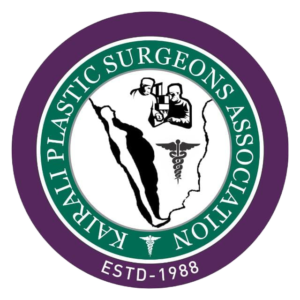
Aging is an inevitable process in any human being. Manifestations of increasing age show up at different corners of the body. In the face the corners are mainly around the eyes, around the mouth and around the ears. Over the years all the tissues suffer the senile changes that differ in different tissues like skin, fat, fascia, ligaments, muscles and even bones. Ligament laxity and skin sagging and fat atrophy all play an equal and significant role in this process. Clinically the skin loses its shine and elasticity, ligaments become lax, muscles thinner and bones shallow. The familiar but most disliked wrinkles around the eyes, deep and prominent naso-labial folds become tell tale evidence that you are no younger. The young full shiny face is the hall mark of adequate fat in the subcutaneous space.
An ideal terminology may be Facial rejuvenation-which includes all the procedures which encompasses both non surgical as well as surgical procedures.
Non surgical procedures include: Botox, Fillers, Lasers, Chemical peels meso therapy, Radiofrequency etc
Surgical procedures: Face lift, Fat grafting, Facial liposuction, Brow lift, Blepharoplasty etc.
Face Lift – Full
Improves sagging facial skin, jowls and loose neck skin.
Pre operative counseling: Very important as in any surgery but more important in facial surgeries where even the slight residual deformity is visible externally which may have emotional disturbance. The final scar, the temporary or rarely permanent nerve injury manifestation like facial palsy either total or partial should be stressed repeatedly.
PROCEDURE:
A full or complete facelift improves the skin and tissues of the lower two-thirds of the face, from the ears, across to the cheeks, and down to the jaw line, by removing excess fat, tightening muscles and re-draping skin. The scar is placed in front of the ear, goes around it to tighten the sagging neck. There is a group of surgeons practicing short scar face lifts. The face lift procedure is evolving into minimally invasive procedure-where less dissection and loop sutures result in early recovery with short scar. This is called MACS –LIFT. Combining fat graft in all facelift procedures has helped in getting good skin rejuvenation. One day drainage may be required from the operated area. With good experience, sometimes using surgical net sutures, drain can be avoided.
Anesthesia: Usually general anesthesia is used or the patient may elect to have sedation and local anesthesia. With good sedation and local infiltration with long acting local anesthetics, surgery can be done comfortably and patient can be discharged the same day –Day care ambulatory surgery.
RISKS:
Temporary bruising, swelling, numbness and tenderness of the skin, as well as a tight feeling and dry skin. For men, permanent need to shave behind ears, where beard-growing skin is repositioned.
Injury to the nerves that control facial muscles or feeling (which is usually temporary but in rare cases may be permanent), infection, bleeding, poor healing, excessive scarring, asymmetry and a change in the hairline. A word of caution: Use of blood thinners like aspirin, clopidogel, Heparin to be informed to the surgeon to avoid bleeding and clot complications.
RECOVERY:
The patient may return to work after ten to fourteen days. More strenuous activity may be resumed after two weeks or more. Bruising should begin to disappear after seven to ten days. Sun exposure must be limited for several months after surgery. The use of a sun block that provides both UVA and UVB (ultraviolet) protection is recommended.
Most facelifts can be expected to maintain optimum appearance for five to ten years. It is essential to make them understand any lift has a tendency for re-sagging over years due to gravity pull.
